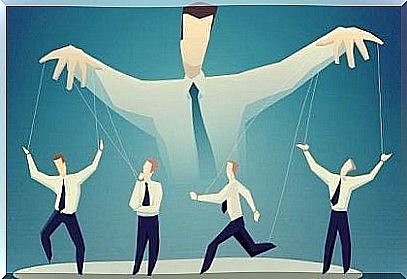The Overton Window: What Does That Mean?

The Overton window is a political concept that describes how the public’s perception of a topic can be changed. It says that ideas that were previously considered confusing can be accepted in the long run.
According to this concept, even the taboo subjects are not free from the effects. The general perception that society has of problems such as incest, pedophilia or cannibalism can change radically. For this to happen, it is not necessary to brainwash or implement a dictatorial regime, but to develop a number of advanced techniques whose implementation will go unnoticed by society.
Origins of the concept in the Overton window
Joseph Overton studied this concept. He observed that for each area of public administration, the public accepted only a narrow range of potential guidelines. These guidelines do not change when politicians change. Society chooses them.
Overton developed a vertical model of politics that ranges from “the free” at the top of the spectrum to “least free” at the bottom. This is related to the government’s intervention where acceptable guidelines are framed in a window that can move within this axis.

The stages in the Overton window
In principle, it seems impossible that society will accept some of the taboos we mentioned above. But the concept in the Overton window claims that this can happen. To see what the different stages of the Overton window consist of, we focus on one particular taboo: cannibalism.
Phase 1: From the unthinkable to the radical
In the first stage, cannibalism is at the lowest level of acceptance in the Overton window. Society considers it immoral. It is considered disgusting and abominable. At this point, the window is closed and immobile.
To begin to change public opinion, researchers are beginning to study it. For researchers, there should be no taboo subjects. Thus, the scientific community begins to analyze the traditions and rituals of individual tribes.
Phase 2: From the radical to the acceptable
After phase 1, the idea has gone from being unthinkable to being discussed. In the second step, people begin to accept the idea. With the researchers’ conclusions, society sees those who refuse to acquire knowledge about the subject as irreconcilable.
People who resist will be seen as fanatics who oppose science. The intolerant is publicly judged as the idea loses its negative connotations. The name “cannibalism” can even be changed to something like anthropophagy. Little by little, the media makes eating human flesh acceptable and respectable.
Phase 3: From acceptable to sensible
Consumption of human flesh becomes a common right. The idea now makes sense. In the meantime, those who continue to oppose the idea will continue to be criticized. These people will be considered radicals who are against a fundamental right.
On the other hand, the scientific community and the media insist that there are many cases of cannibalism in human history.
Phase 4: From the sensible to the popular
Cannibalism is now a favorite topic. The idea is starting to appear in movies and TV series as something positive. At the same time, historical figures related to this practice are praised. The phenomenon is becoming increasingly extensive and continues to strengthen its positive image.

Phase 5: From the popular to the political
The Overton window, which was initially closed, has opened wide. In this last stage, legislative machinery that will legalize the phenomenon begins to prepare. The listeners of cannibalism are consolidating in politics and are beginning to seek more power and representation.
The effects of the Overton window
Thus, an idea that was first considered unthinkable and immoral has been established in the collective consciousness as a right. This happened through a concept that can change the audience’s perception of any idea, no matter how crazy it may be.








